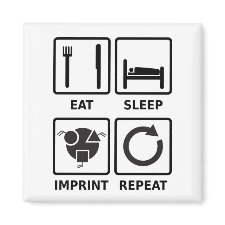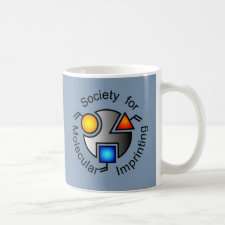
Authors: Balogh D, Tel-Vered R, Riskin M, Orbach R, Willner I
Article Title: Electrified Au Nanoparticle Sponges with Controlled Hydrophilic/Hydrophobic Properties.
Publication date: 2010
Journal: ACS Nano
Volume: 5
Issue: (1)
Page numbers: 299-306.
DOI: 10.1021/nn1027592
Abstract: Molecularly imprinted Au nanoparticle (NP) composites for the selective binding of the electron acceptors N,N'-dimethyl-4,4'-bipyridinium, MV2+ (1), or bis-N-methylpyridinium-4,4'-ethylene, BPE2+ (2), are prepared by the electropolymerization of thioaniline-functionalized Au NPs in the presence of the electron acceptor molecules and the subsequent rinsing off of the imprint substrates. The electrochemical oxidation of the π-donor bisaniline units bridging the Au NPs yields the quinoid electron acceptor bridges, which are re-reduced to the bisaniline state. By the cyclic oxidation and reduction of the bridging units, they are reversibly switched between the π-acceptor and the π-donor states, thus allowing the electrochemically triggered uptake and release of the electron acceptors (1 or 2) to and from the imprinted sites. While the electron acceptors 1 or 2 bind to the imprinted sites via donor-acceptor interactions, these substrates are released from the Au NP matrices upon the oxidation of the bridges to the quinoid state. The electrochemically switched wettability of the imprinted composites is demonstrated upon the reversible uptake, or release, of the substrates to and from the matrices. While the association of 1 or 2 to the respectively imprinted composites generates hydrophilic surfaces ([Theta] = 30 and 41°, respectively), the release of the substrates from the matrices yields surfaces of enhanced hydrophobicity ([Theta] = 60 and 55°, respectively). The electrochemically switched wettability is selective to the imprinted substrates and is amplified in the presence of the imprinted matrices as compared to the non-imprinted composites. The association of MV2+ or BPE2+ to the imprinted sites is further electrochemically characterized
Template and target information: N,N'-dimethyl-4,4'-bipyridinium, MV2+, bis-N-methylpyridinium-4,4'-ethylene, BPE2+



Join the Society for Molecular Imprinting

New items RSS feed
Sign-up for e-mail updates:
Choose between receiving an occasional newsletter or more frequent e-mail alerts.
Click here to go to the sign-up page.
Is your name elemental or peptidic? Enter your name and find out by clicking either of the buttons below!
Other products you may like:
 MIPdatabase
MIPdatabase









